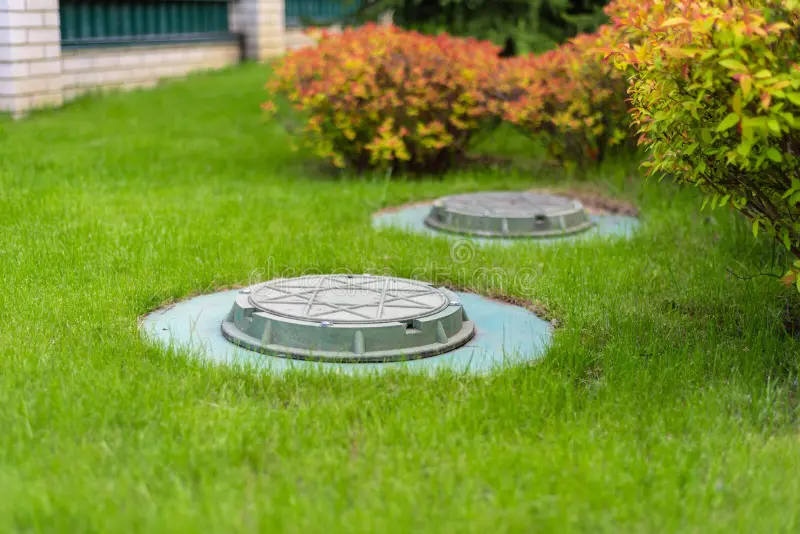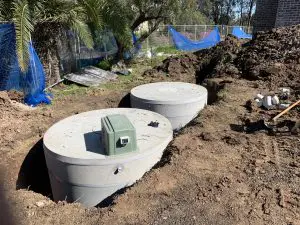When it comes to managing wastewater on your property, choosing between a traditional septic tank and an Aerated Wastewater Treatment System (AWTS) can be a significant decision. For homeowners in Sydney, this choice can be influenced by factors such as the size of the property, environmental impact, and long-term costs. Understanding the differences between these systems will help you make an informed decision tailored to your needs. In this blog, we will delve into what each system offers, their advantages and disadvantages, and how to determine which might be better for your Sydney property.
Understanding Septic Tanks
How Septic Tanks Work
A septic tank is a buried, water-tight container typically made from concrete, fiberglass, or plastic. Its primary function is to hold and treat wastewater from your home. The process begins with wastewater entering the tank through an inlet pipe. Inside the tank, solids settle to the bottom, forming a sludge layer, while oils and fats float to the top, creating a scum layer. The liquid waste in the middle, known as effluent, flows out into a drain field or leach field where it percolates into the soil and is naturally filtered.
Advantages of Septic TanksS
– Cost-Effective Installation: Septic tanks are generally less expensive to install compared to AWTS. This makes them a popular choice for properties with a lower initial budget.

Simplicity: With fewer moving parts and less complex technology, septic systems are straightforward and less prone to mechanical failures
Low Maintenance: Although regular maintenance is required (such as pumping out the tank every 3-5 years), septic systems typically have fewer ongoing maintenance issues compared to AWTS.
Disadvantages of Septic Tank
Environmental Impact: Septic tanks can potentially harm the environment if not maintained properly. Issues like leach field failure can lead to groundwater contamination.
Space Requirements: Septic tanks need a significant amount of space for the tank and the drain field. This can be a limitation on smaller properties or those with less available land.
Limited Treatment: Septic systems provide basic treatment and may not be suitable for areas with high water tables or poor soil drainage, which can affect their efficiency.
Understanding Aerated Wastewater Treatment Systems (AWTS)
How AWTS Work
An AWTS is a more advanced wastewater treatment system that uses aerobic bacteria to break down organic matter in the wastewater. Unlike a septic tank, an AWTS has a mechanical aeration unit that introduces air into the wastewater, encouraging aerobic bacteria to digest the waste more efficiently. The treated water is then clarified and often disinfected before being released into the environment or reused.
Advantages of AWTS
Enhanced Treatment: AWTS provide a higher level of wastewater treatment compared to septic tanks. They can produce cleaner effluent, which is beneficial for protecting the environment and ensuring safe water discharge.
Space Efficiency: AWTS typically require less space than traditional septic systems. This makes them a viable option for smaller properties or those with limited land availability.
Suitable for Challenging Conditions: AWTS can be used in areas with high water tables or poor soil conditions where traditional septic systems might fail.
Disadvantages of AWTS
Higher Installation Costs: The installation of an AWTS is generally more expensive than a septic tank due to the complexity of the system and the need for specialized equipment.
Maintenance Requirements: AWTS require regular maintenance and inspections to ensure they are functioning correctly. This includes checking the aeration unit, inspecting the pump, and potentially dealing with more frequent servicing needs.
Electricity Dependence: AWTS rely on electrical power to operate the aeration unit. This can be a drawback in areas with unreliable power supply or in cases of power outages.
Factors to Consider When Choosing Between Septic Tanks and AWTS
Property Size and Layout
For larger properties with ample land, a traditional septic tank may be a cost-effective solution. However, if you have a smaller lot or limited space, an AWTS might be more appropriate due to its space-efficient design and higher treatment capabilities.
Environmental Concerns
If your property is located near sensitive environmental areas such as wetlands or waterways, the enhanced treatment capabilities of an AWTS can be a significant advantage. The cleaner effluent produced by AWTS helps minimize the risk of contaminating nearby water sources.
Budget and Cost Considerations
While septic tanks generally have a lower initial cost, AWTS offer better treatment and efficiency, which may justify the higher expense. Consider both the installation and ongoing maintenance costs when making your decision. AWTS might require more frequent servicing, which can add to the long-term expenses.
Local Regulations
Sydney has specific regulations and guidelines for wastewater management. It’s essential to check with your local council or relevant authorities to ensure compliance with these regulations. Some areas may have restrictions or requirements that could influence your choice between a septic tank and an AWTS.
Future Plans
Consider your long-term plans for the property. If you anticipate significant changes, such as adding more bathrooms or expanding the house, you may want to choose a system that can handle increased wastewater volumes and demands.
Deciding between a septic tank and an AWTS for your Sydney property involves evaluating various factors, including the size of your property, environmental impact, budget, and maintenance requirements. While septic tanks offer a cost-effective and straightforward solution, AWTS provide advanced treatment and are more suitable for challenging conditions.
Ultimately, the best choice will depend on your specific needs and circumstances. Consulting with a local wastewater management expert can provide personalized advice and help you make an informed decision based on your property’s requirements. By understanding the differences between these systems and considering your unique situation, you can ensure that your wastewater management solution is both effective and sustainable for years to come.
Related Posts
- How Many Years Is A Septic System Good For?
- The Ultimate Guide to Maintaining Your AWTS System
- Understanding Wastewater Production and its Impact on Septic Systems
- What To Consider When Looking At A Small Septic Tank For One Toilet
- What are the advantages of wastewater treatment systems?
- Why is the Treatment of Wastewater Important?
- What are home sewage treatment plants?
- Where Are Septic Tanks Used




